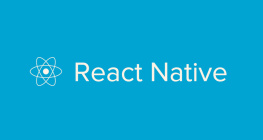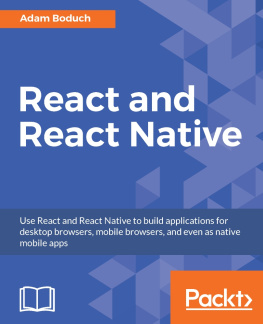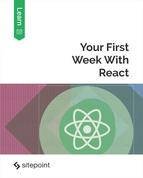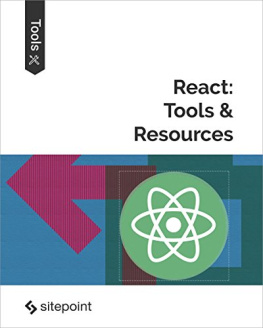it-ebooks - React In-depth
Here you can read online it-ebooks - React In-depth full text of the book (entire story) in english for free. Download pdf and epub, get meaning, cover and reviews about this ebook. year: 2017, publisher: iBooker it-ebooks, genre: Home and family. Description of the work, (preface) as well as reviews are available. Best literature library LitArk.com created for fans of good reading and offers a wide selection of genres:
Romance novel
Science fiction
Adventure
Detective
Science
History
Home and family
Prose
Art
Politics
Computer
Non-fiction
Religion
Business
Children
Humor
Choose a favorite category and find really read worthwhile books. Enjoy immersion in the world of imagination, feel the emotions of the characters or learn something new for yourself, make an fascinating discovery.
- Book:React In-depth
- Author:
- Publisher:iBooker it-ebooks
- Genre:
- Year:2017
- Rating:3 / 5
- Favourites:Add to favourites
- Your mark:
- 60
- 1
- 2
- 3
- 4
- 5
React In-depth: summary, description and annotation
We offer to read an annotation, description, summary or preface (depends on what the author of the book "React In-depth" wrote himself). If you haven't found the necessary information about the book — write in the comments, we will try to find it.
React In-depth — read online for free the complete book (whole text) full work
Below is the text of the book, divided by pages. System saving the place of the last page read, allows you to conveniently read the book "React In-depth" online for free, without having to search again every time where you left off. Put a bookmark, and you can go to the page where you finished reading at any time.
Font size:
Interval:
Bookmark:
- 1.1
- 1.2
- 1.3
- 1.3.1
- 1.3.2
- 1.3.2.1
- 1.3.2.2
- 1.3.2.3
- 1.3.2.4
- 1.3.2.5
- 1.3.3
- 1.3.3.1
- 1.3.3.2
- 1.3.3.3
- 1.3.3.4
- 1.3.3.5
- 1.3.4
- 1.3.5
- 1.4
- 1.4.1
- 1.4.2
- 1.4.3
- 1.5
@jamespolanco
In his role as co-founder and CTO of DevelopmentArc, James strives to take powerful business ideas and integrate them into elegant technological experiences to help clients achieve their overall strategic goals. Since 1996, James has helped plan, guide and create interactive and web-based solutions for companies including Adobe, Toyota Motor Sports, BlueKai, VMWare, Macromedia, and DHAP Digital. James is also an international speaker, presenting on technology implementations & processes and a published author on the topic of full team product development and company workflows.
@aaronpedersen
As co-founder and CEO of DevelopmentArc, a boutique development firm and parent company of Pedanco, Aaron Pedersens passion lies in helping businesses streamline process making teams work more effectively through innovative technology solutions. A published author, expert speaker, and sought-after business consultant and trainer, Aaron works with a wide range of companies, from Fortune 500 corporations and multi-chain hospitality companies to emerging brands and seed-round startups including Toyota Motor Sports, DHAP Digital, Adobe, KitchenNetwork and FitStar.
A React Component kicks off the life cycle during the initial application ex: ReactDOM.render(). With the initialization of the component instance, we start moving through the Birth phase of the life cycle. Before we dig deeper into the mechanics of the Birth phase, let's step back a bit and talk about what this phase focuses on.
The most obvious focus of the birth phase is the initial configuration for our Component instance. This is where we pass in the props that will define the instance. But during this phase there are a lot more moving pieces that we can take advantage of.
In Birth we configure the default state and get access to the initial UI display. It also starts the mounting process for children of the Component. Once the children mount, we get first access to the Native UI layer (DOM, UIView, etc.). With Native UI access, we can start to query and modify how our content is actually displayed. This is also when we can begin the process of integrating 3rd Party UI libraries and components.
When learning React, many developers have a common misconception. At first glance, one would assume that a mounted instance is the same as a component class. For example, if I create a new React component and then render() it to the DOM:
import React from 'react' ; import ReactDOM from 'react-dom' ; class MyComponent extends React . Component { render() { return < div > Hello World! </<span class="hljs-class">div > ; } }; ReactDOM.render( < MyComponent /> , document.getElementById('mount-point')); The initial assumption is that during render() an instance of the MyComponent class is created, using something like new MyComponent(). This instance is then passed to render. Although this sounds reasonable, the reality of the process is a little more involved.
What is actually occurring is the JSX processor converts the line to use React.createElement to generate the instance. This generated Element is what is passed to the render() method:
// generated code post-JSX processing ReactDOM.render( React.createElement(MyComponent, null ), document .getElementById( 'mount-point' ) );A React Element is really just a description of what will eventually be used to generate the Native UI. This is a core, pardon the pun, element of virtual DOM technology in React.
The primary type in React is the ReactElement. It has four properties: type, props, key and ref. It has no methods and nothing on the prototype.
-- https://facebook.github.io/react/docs/glossary.html#react-elements
The Element is a lightweight object representation of what will become the component instance. If we try to access the Element thinking it is the Class instance we will have some issues, such as availability of expected methods.
So, how does this tie into the life cycle? These descriptor Elements are essential to the creation of the Native UI and are the catalyst to the life cycle.
render()To most React developers, the render() method is the most familiar. We write our JSX and layout here. It's where we spend a lot of time and drives the layout of the application. When we talk about the first render() this is a special version of the render() method that mounts our entire application on the Native UI.
In the browser, this is the ReactDOM.render() method. Here we pass in the root Element and tell React where to mount our content. With this call, React begins processing the passed Element(s) and generate instances of our React components. The Element is used to generate the type instance and then the props are passed to the Component instance.
This is the point where we enter the Component life cycle. React uses the instance property on the Element and begins construction.
Next Up:
The Native UI layer is the system that handles UI content rendering to screen. In a browser, this is the DOM. On device, this would be the UIView (or comparable). React handles the translation of Component content to the native layer format.
Component reuse and composability are some of the core tenets of React development. As our applications scale, development time can be dramatically reduced through this process. Yet, creating reusable Components takes planning and understanding to support multiple use cases.
Understanding the intention of the Component is the first step towards reuse. Sometimes, we know a Component will be used in many different ways from the start. In those situations, we can plan for the different scenarios right away. In other situations, Component intentions will change over the lifespan of the application. Understanding how to evolve a Component is just as important as understanding how to create reusability.
Let's take a quick moment and discuss the process of application architecture. We often hear about over-architected systems. This often occurs when we try to plan for every possible scenario that could ever occur through the life of an application. To try and support every conceivable use is a fools errand. When we try to build these systems we add unnecessary complexity and often make development harder, rather then easier.
At the same time, we don't want to build a system that offers no flexibility at all. It may be faster to just build it without future thought, but adding new features can be just as time consuming later on. Trying to find the right balance is the hardest part of application architecture. We want to create a flexible application that allows growth but we don't want to waste time on all possibilities.
Font size:
Interval:
Bookmark:
Similar books «React In-depth»
Look at similar books to React In-depth. We have selected literature similar in name and meaning in the hope of providing readers with more options to find new, interesting, not yet read works.
Discussion, reviews of the book React In-depth and just readers' own opinions. Leave your comments, write what you think about the work, its meaning or the main characters. Specify what exactly you liked and what you didn't like, and why you think so.

















